Learning & Teaching
Learning and Teaching encompasses the following areas: Student Outcomes, Curriculum, Assessment, Reporting, Principles and Pedagogy.

Learning & Teaching
Learning and Teaching encompasses the following areas: Student Outcomes, Curriculum, Assessment, Reporting, Principles and Pedagogy.


It’s Book Week! An exciting week lies ahead.
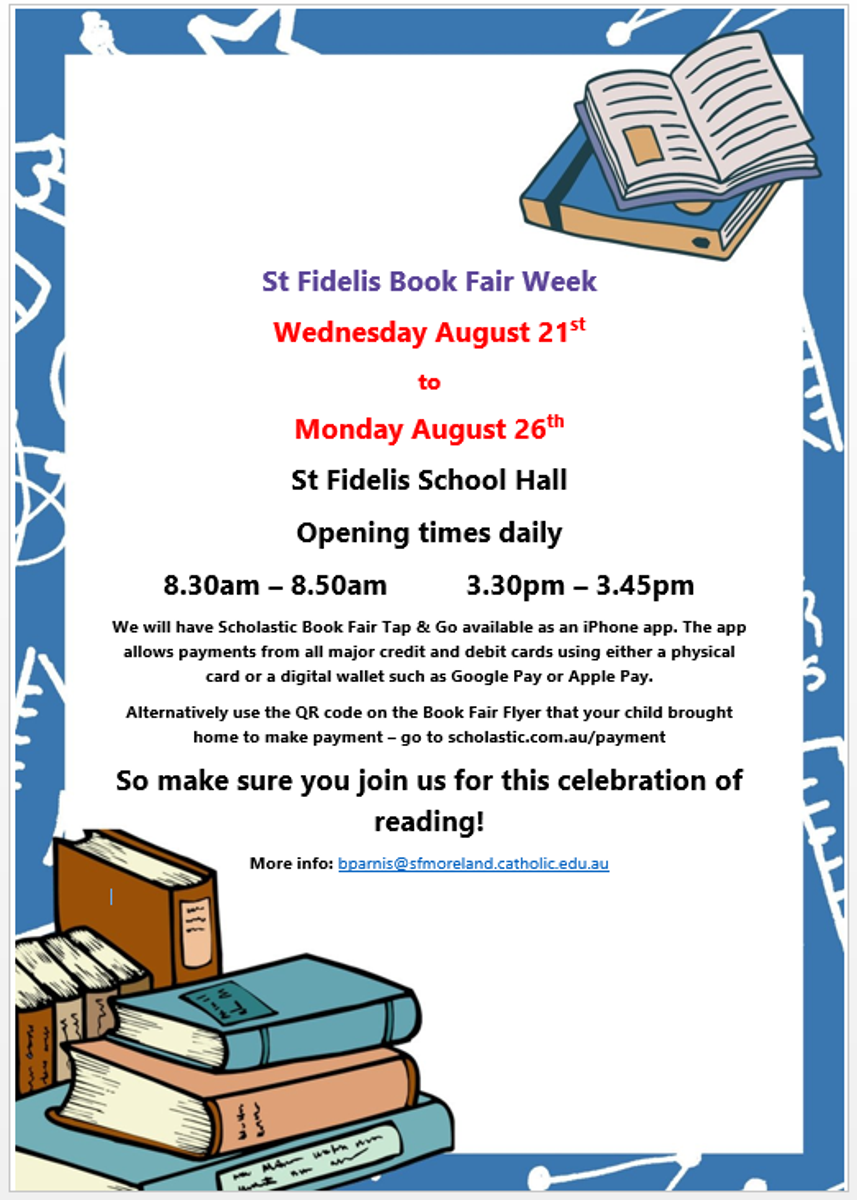

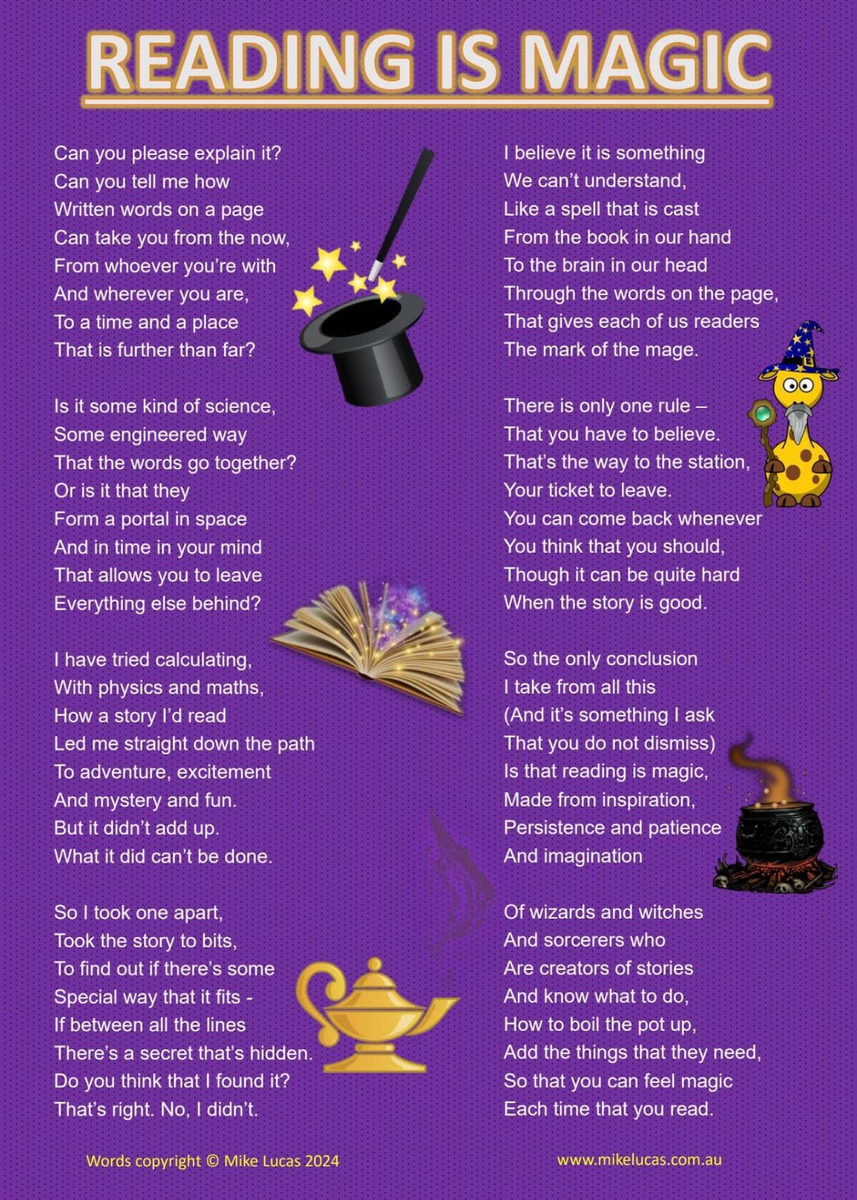

Over the past few weeks, students have had the pleasure of exploring the shortlisted books and the works of Sofie Laguna during their Literacy lessons. They’ve been discussing their favourite books and the reasons behind their preferences.
This week, students will continue engaging with reading in a variety of ways. Foundation students will focus on identifying the author's purpose, recognizing different text types, making predictions, and connecting characters to their own experiences. Year 1/2 students will write a book report and create a narrative based on their reading. Meanwhile, Years 3/4 and 5/6 will be writing detailed book reviews.
See you during the week at the Book Fair and on Friday morning for the Book Week Parade.
Bernadette Parnis
bparnis@sfmoreland.catholic.edu.au

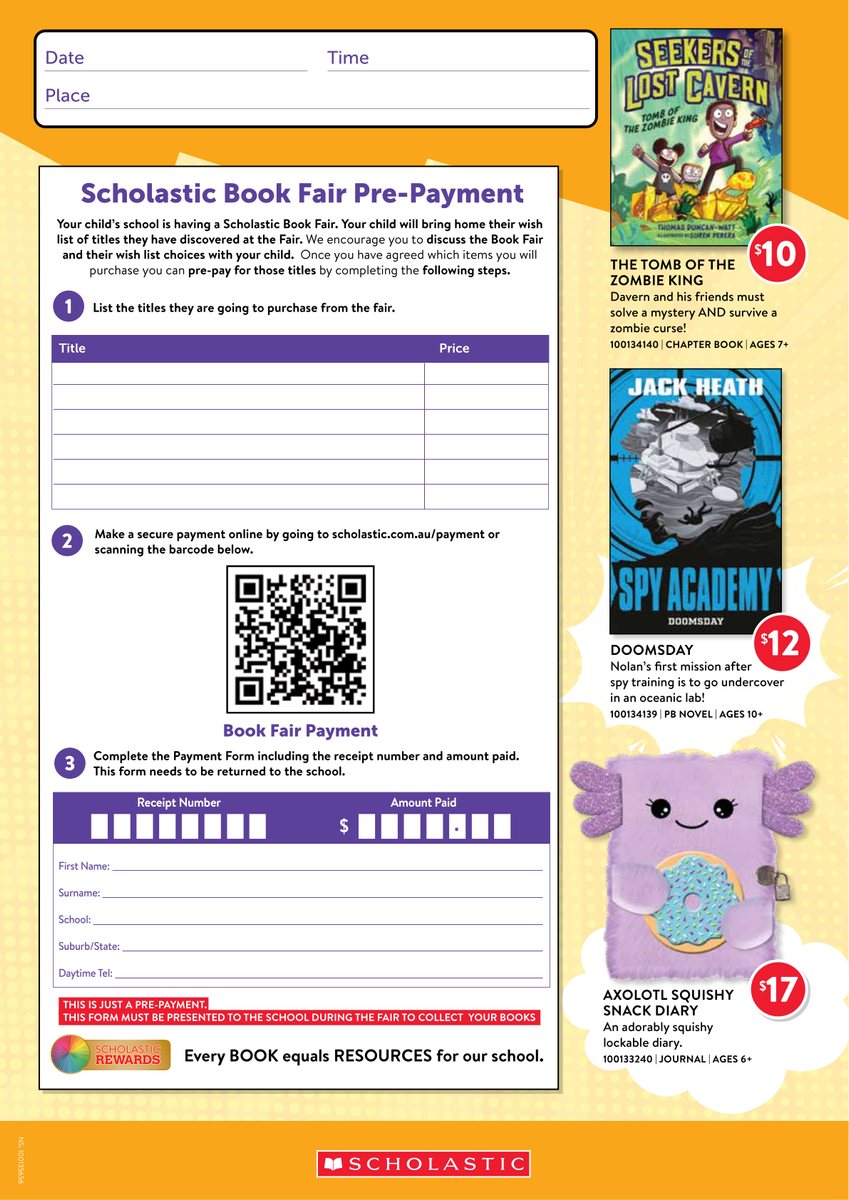


As part of the Victorian Curriculum, students are introduced to division as a key mathematical concept from an early stage. Mastering division is essential for your child’s progress in mathematics, as it forms the foundation for more advanced topics like fractions, ratios, and problem-solving.
Early Years (Foundation to Year 2): At this stage, students are introduced to the idea of sharing equally. They might divide objects into equal groups or use simple sharing problems to understand the concept of division. Students are given 12 or other small objects, and ask them to share 12 toys between 3 friends. How many will they each get?Possible questions include:
Can you arrange the toys/counters into equal rows?
How many different ways can you arrange the toys/counters into equal rows?
Students record and share their solutions.
This activity could be repeated with smaller or larger collections of objects.


Middle Years (Year 3 to Year 4): Students begin to explore division more formally, using terms like "quotient" and "remainder." They learn to divide numbers using strategies such as repeated subtraction, equal groups, and simple division facts related to multiplication - advanced strategies -
halving and halving, e.g. 18 ÷ 6 = 9 ÷ 3
Dividing by 4, 8, 16, ... Because 4 = 2 × 2 and 8 = 2 × 2 × 2, we can divide by 4 and 8, and by all powers of 2, by successive halving.
To divide by 4, halve and halve again.
To divide by 8, halve, halve, and halve again.
For example, to divide 628 by 4, 628 ÷ 4 = (628 ÷ 2) ÷ 2 = 314 ÷ 2 = 157
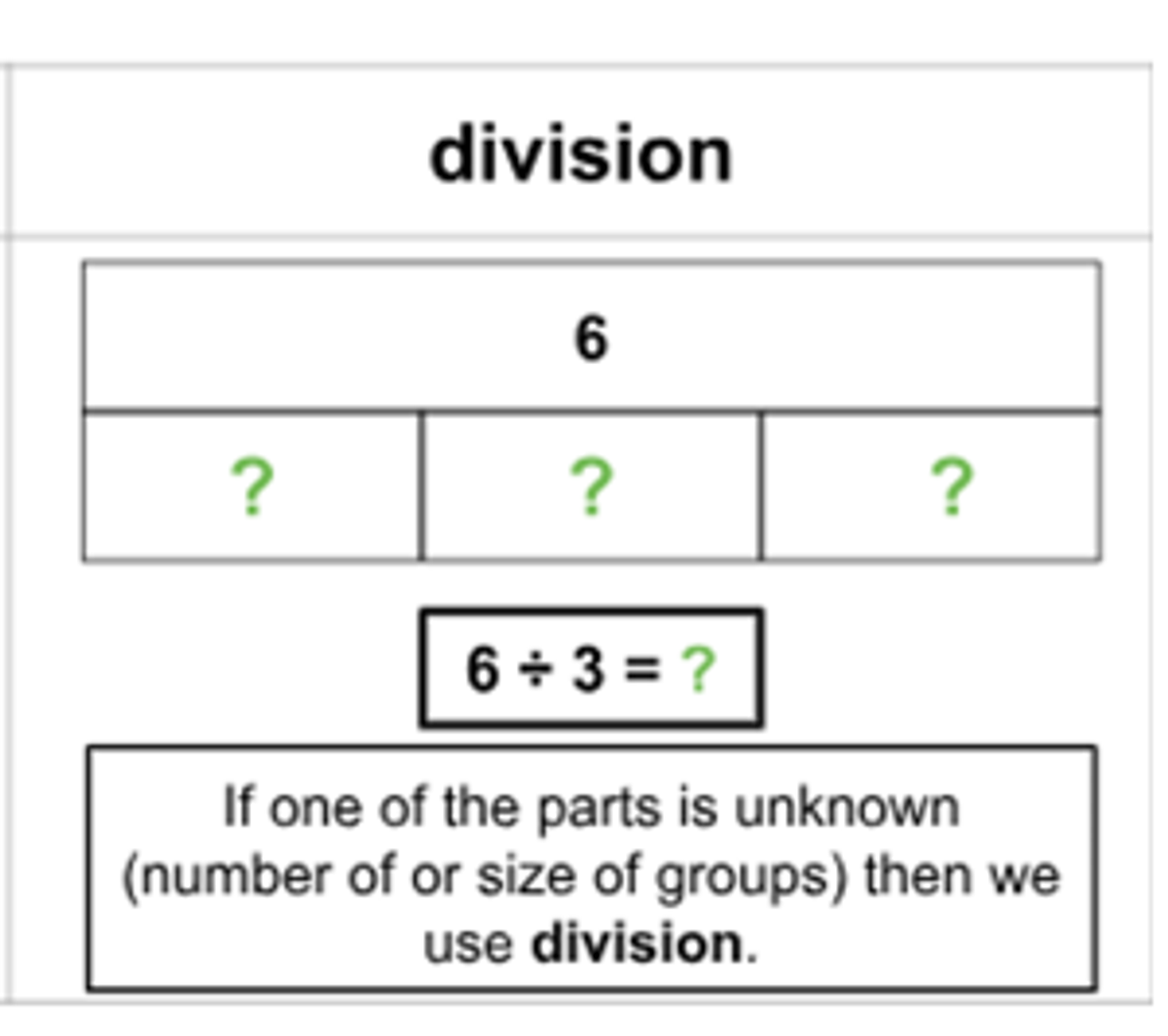

Chunking, e.g. 44 ÷ 2 = 40 ÷ 2 and 4 ÷ 2.
Upper Years (Year 5 to Year 6): Division becomes more complex as students work with larger numbers, decimals, and word problems. They use efficient written methods like long division and explore the relationship between division, fractions, and percentages.
Division by 5, 25, 125, ...
Because 5 = 10 ÷ 2, and 25 = 100 ÷ 4, there is a very effective way to divide by 5 and 25 and all powers of 5.
To divide by 5, divide by 10 and then double.
To divide by 25, divide by 100 and then double and double again.
Decimals are best used for the working. For example, to divide 245 and 382 by 5, 245 ÷ 5 = (245 ÷ 10) × 2 = 24.5 × 2 = 49
382 ÷ 5 = (382 ÷ 10) × 2 = 38.2 × 2 = 76.4
Before children are taught any formal recordings using the standard algorithm for division they need plenty of familiarity with tables and number patterns in them as well as practice with mental strategies such as chunking, doubling and halving.
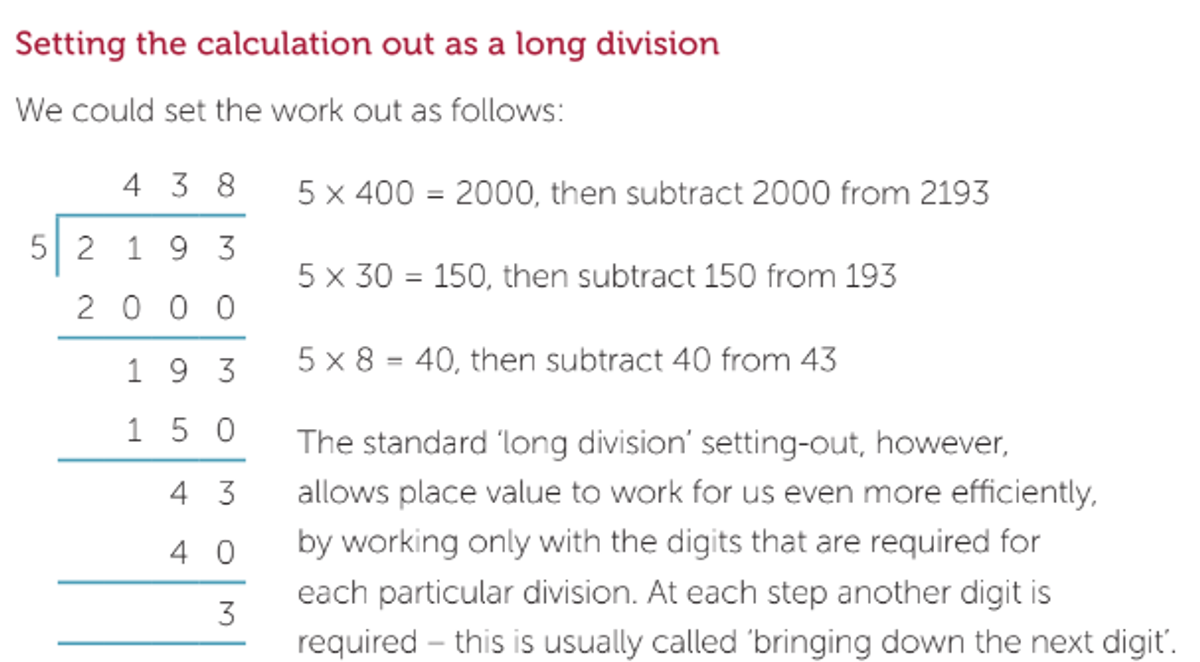

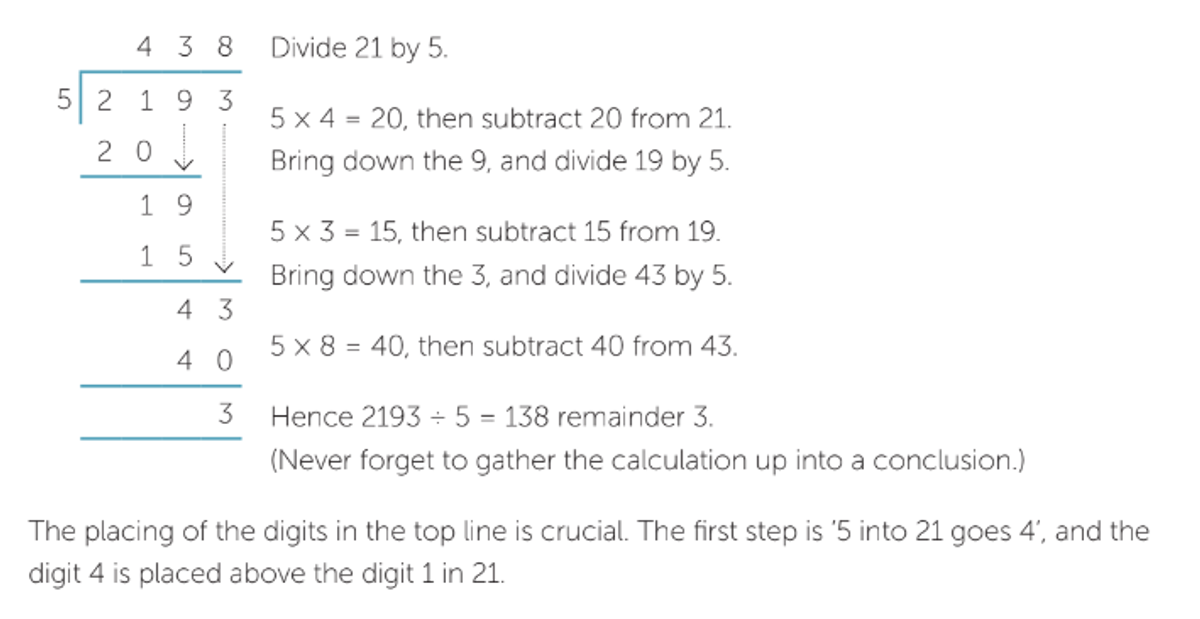



How You Can Support Your Child:
Together, we can support your child’s growth and help them achieve their best. Thank you for your ongoing support.
Colleen Monaghan
Maths Leader